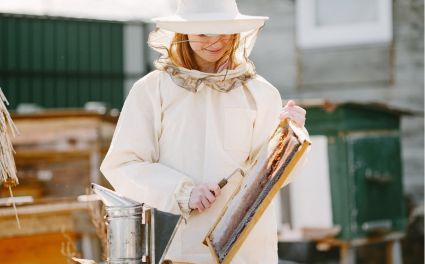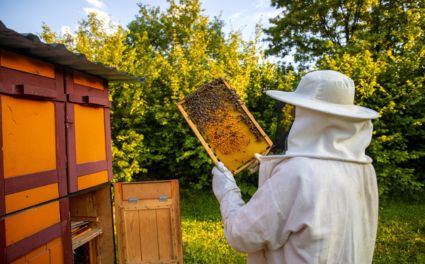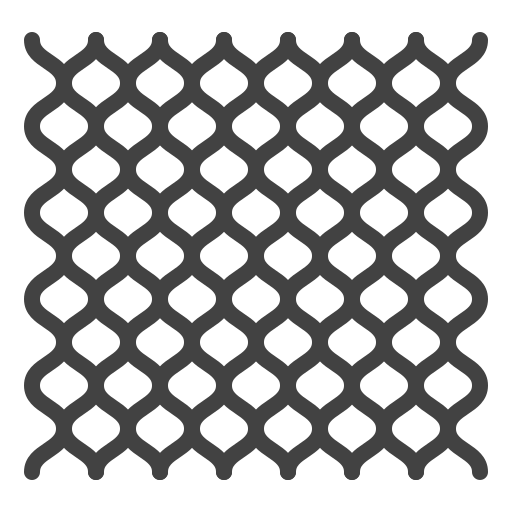Con la bajada de las temperaturas y la llegada del frío invernal, los apicultores se enfrentan a un reto crucial: asegurar la supervivencia de sus colonias durante los meses fríos. La preparación invernal de la colmena es más que una simple tarea estacional; es una cuestión de vida o muerte para sus abejas. Un aislamiento térmico adecuado de la colmena puede aumentar significativamente las posibilidades de que su colonia sobreviva a la temporada.
Esta guía cubre todo, desde consejos prácticos hasta beneficios de aislamiento y equipos esenciales para mantener su colmena funcionando alegremente hasta la primavera.
¿Por qué es imprescindible invernar las colmenas?
Las abejas son resistentes, pero incluso ellas necesitan ayuda para sobrellevar los gélidos inviernos. Cuando hace mucho frío afuera, se agrupan, generando calor al consumir sus reservas de miel. Sin un aislamiento adecuado y control de la humedad, las colmenas pueden volverse mortales.
Las corrientes de aire frío, la condensación y la falta de alimento pueden acabar con una colonia. Añadir aislamiento a las colmenas crea un entorno estable y seguro para que las abejas hagan lo que mejor saben hacer: sobrevivir y crecer.
¿Qué hace que el aislamiento tipo colmena sea efectivo?
Piensa en cómo viven las abejas en la naturaleza: suelen anidar en huecos de árboles, lo que las protege de forma natural de las temperaturas extremas y la humedad. Aislar la colmena imita esta configuración natural, manteniendo estable la temperatura interior. Esto significa que las abejas no tienen que esforzarse tanto para mantenerse calientes, conservando así su energía y miel.
Pero el aislamiento por sí solo no basta; también es necesario controlar la humedad. Las abejas producen calor y, a su vez, vapor de agua. Sin una ventilación adecuada, ese vapor puede congelarse y dañar la colonia.
Herramientas y equipos esenciales para la preparación de colmenas en invierno
Antes de profundizar en los detalles, es fundamental tener las herramientas adecuadas a mano. OZ Armour , reconocida por sus productos apícolas de alta calidad como trajes de apicultura y Chaquetas de apicultura , ofrece una variedad de equipos que pueden agilizar la preparación de su colmena para el invierno:
Envolturas de colmena OZ Armour:
Al agregar una capa de aislamiento, estos envoltorios ofrecen protección contra el viento y las temperaturas extremadamente frías.
Tableros de humedad:
Eficaz para absorber la condensación y evitar que gotee sobre las abejas.
Kits de ventilación:
Diseñado para equilibrar el flujo de aire y retener el calor.
Trajes de apicultura:
Incluso durante la preparación para el invierno, la seguridad es primordial. Los trajes de OZ Armour garantizan protección total mientras trabaja.

Guía paso a paso para preparar sus colmenas para el invierno
A continuación se muestran algunos pasos a seguir:
-
Inspeccione sus colmenas:
Comience por observar la fortaleza y el estado de cada colonia. Busque señales de enfermedades, plagas o reservas insuficientes de alimento. Es posible que sea necesario combinar colonias débiles con otras más fuertes para aumentar sus probabilidades de supervivencia.
-
Reducir la entrada de la colmena:
Una entrada reducida limita las corrientes de aire frío y facilita la defensa de las abejas contra plagas como los ratones. Instale un reductor de entrada o una protección contra ratones para mantener alejados a los intrusos.
-
Aislar la colmena:
Aislamiento exterior:
Cubra la colmena con un aislante de espuma o una película térmica. Asegúrese de que no haya huecos por los que pueda filtrarse el viento. Las películas térmicas para colmenas de OZ Armour son una excelente opción por su facilidad de uso y eficacia.
Aislamiento interior:
Coloque una cubierta interior con una capa adicional de material aislante, como una placa de espuma o una almohadilla de lana, para retener el calor dentro de la colmena. Asegúrese de que no obstruya los orificios de ventilación.
-
Controlar la humedad:
El exceso de humedad es una de las mayores amenazas para las abejas invernantes. Utilice una tabla absorbente o coloque un material absorbente, como arpillera o virutas de madera, sobre la cubierta interior para atrapar la condensación. Combine esto con una ventilación adecuada para permitir que el vapor de agua escape sin dejar entrar el aire frío.
-
Asegurar suficientes tiendas de alimentos:
Las abejas necesitan suficiente miel para sobrevivir el invierno. Si las reservas son escasas, proporcione alimento complementario con bloques de azúcar o fondant. Evite el alimento líquido, ya que puede congelarse.
-
Bloquear el viento:
Coloque la colmena en un lugar resguardado o instale un cortavientos con fardos de paja o una cerca. Esto reduce la pérdida de calor y evita que entren corrientes de aire.
-
Vigila las cosas:
Incluso después de acondicionar la colmena para el invierno, es importante realizar revisiones ocasionales. En días cálidos, escuche el leve zumbido del grupo. Evite abrir la colmena a menos que sea necesario, ya que puede alterar el equilibrio térmico de la colonia.
¿Por qué es rentable el aislamiento?
- Mayor tasa de supervivencia de las colonias : Aislar las colmenas para la supervivencia invernal reduce drásticamente el riesgo de colapso de la colonia debido al estrés por frío o la inanición. Las abejas pueden conservar energía, lo que les permite sobrevivir más tiempo con la miel almacenada.
- Problemas relacionados con la humedad reducidos : con un control eficaz de la humedad de la colmena en invierno, puede evitar el moho, los hongos y la congelación de la condensación, todos los cuales pueden dañar a las abejas y sus crías.
- Mayor productividad primaveral : Una colmena bien aislada emerge más fuerte en primavera, con más abejas listas para alimentarse y fortalecer la colonia. Esto prepara el terreno para una exitosa temporada de producción de miel.
- Menos estrés para el apicultor : saber que sus colmenas están bien preparadas le permitirá estar tranquilo y confiar en que sus abejas tienen las mejores posibilidades de prosperar durante el invierno.
Errores que hay que evitar
Sobreaislamiento sin ventilación:
El exceso de aislamiento sin suficiente flujo de aire puede generar humedad atrapada, lo que es más dañino que las bajas temperaturas.
Descuidar el control de plagas:
Los ratones, ácaros y otras plagas pueden causar problemas importantes si no se abordan antes del invierno.
Ignorando el posicionamiento de la colmena:
Colocar las colmenas en áreas expuestas a vientos fuertes o sombra profunda puede aumentar la pérdida de calor y la humedad.
¡Prepárese ahora para una mejor primavera!
Preparar las colmenas es un paso vital en la apicultura. Con una preparación minuciosa y las herramientas adecuadas de marcas confiables como OZ Armour, puede proteger a sus abejas y prepararlas para el éxito.
Un pequeño esfuerzo ahora significa abejas más sanas y felices cuando el clima se calienta.
Conclusión
Preparar sus colmenas para el invierno es esencial para garantizar la supervivencia y la salud de sus abejas durante los meses más fríos. Un aislamiento adecuado, el control de la humedad y unas reservas adecuadas de alimento no solo ayudan a mantener un ambiente estable, sino que también conservan la energía y las reservas de miel de su colonia. Siguiendo los pasos descritos anteriormente y utilizando herramientas de alta calidad como las mantas para colmenas y los paneles de humedad de OZ Armour, puede proteger a sus abejas de los duros desafíos del invierno. Una preparación cuidadosa hoy garantiza colonias más fuertes y sanas en primavera, listas para una temporada productiva. Brinde a sus abejas la mejor oportunidad de prosperar con un manejo cuidadoso de la colmena durante el invierno.












